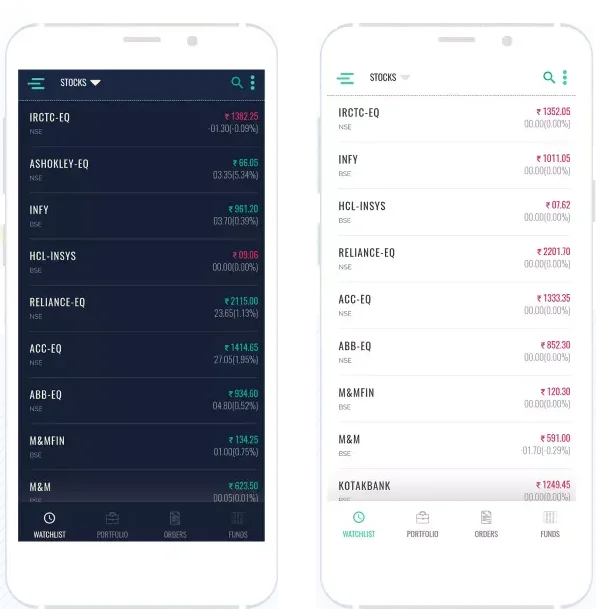Ratio Analysis (Part-2)

Efficiency ratios
Efficiency ratios measure how productively a company uses its assets to generate revenue. It is also called activity ratios. The key activities of a company involve putting the assets in use to produce goods or services, sell the goods or services, collect the payments, pay off the creditors generate and re-invest into business after payment of dividends etc., The efficiency of these activities is measured by the following ratios:
- The inventory turnover ratio- indicates the number of times or the speed with which inventory is sold. It is the number of times the inventory is replaced during the year. The inventory is reported at a cost in the balance sheet and this inventory is the balance inventory from the cost of goods sold during the year. Inventory turnover ratio = cost of goods sold for the year / average cost of inventory during the year
| Mar-19 | Mar-20 | Mar-21 | |
| Cost of goods sold | 220 | 210 | 189 |
| Inventory | 50 | 46 | 48 |
| Average inventory for last two years | 48 | 47 | |
| Inventory turnover = 210/48 & 189/47 | 4.37 | 4.03 | |
| Industry leader | 4.33 | 3.98 | |
Inventory days or days to sell is a ratio derived from the inventory turnover ratio. This ratio indicates the average number of days the company takes to sell the inventory. Fewer days are better as it indicates the demand for goods is high.
Inventory Days = 365 / Inventory Turnover.
| Mar-20 | Mar-21 | |
| Number of days in a year | 365 | 365 |
| Inventory turnover | 4.4 | 4.0 |
| Inventory turnover = (a)/(b) | 83.48 | 90.54 |
| Industry leader | 84.26 | 91.82 |
Interpretation: The company replaces its inventory 4 times in a year. This is comparable with the industry leader. Also, the number of days it takes to sell the inventory has increased from 83.48 to 90.54 which is comparable with the industry leader
- The debtors’ turnover ratio- This ratio tells us how fast the company can convert the debtors into cash or how many times debtors are turned around and cash collected from them. A higher number indicates collection is faster and more efficient and vice versa.
Debtors’ turnover = net sales/average debtors
| Mar-19 | Mar-20 | Mar-21 | |
| Net sales | 271 | 264 | 228 |
| Debtors | 80 | 73 | 71 |
| Average debtors for last two years | 77 | 72 | |
| Debtors’ turnover = 264/77 & 228/72 | 3.45 | 3.17 | |
| Industry leader | 8.38 | 7.61 | |
The average collection period indicates the average number of days it takes for a company to collect cash from the debtors. It shows the collection efficiency of the company.
Average collection days = 365 / Receivable Turnover Ratio
| Mar-20 | Mar-21 | |
| Number of days in a year | 365 | 365 |
| Inventory turnover | 3.5 | 3.2 |
| Average collection days= (a)/(b) | 105.77 | 115.26 |
| Industry leader | 43.56 | 47.98 |
Interpretation: The company has a very low debtor turnover. Only 3 times the debtors are turned around for collection as compared to the industry leader which has a higher rate of turnaround. The collection period is way high as compared to the industry leader. It is bound to have working-capital issues. The collection period has also increased to 115.26 from 105.77
- Accounts payable turnover ratio- indicates the average number of times the creditors are paid during a period. A higher ratio would indicate the company can generate cash and pay off the creditors faster.
Accounts payable turnover ratio = cost of goods sold for the year / average accounts payable.
| Mar-19 | Mar-20 | 44256 | |
| Cost of goods sold | 220 | 210 | 189 |
| Trade payables | 34 | 31 | 26 |
| Average trade payable for last two years | 32 | 28 | |
| Payables turnover = 210/32 & 189/28 | 6.49 | 6.70 | |
| Industry leader | 10.65 | 8.29 | |
| Mar-20 | Mar-21 | |
| Number of days in a year | 365 | 365 |
| Payable’s turnover | 6.5 | 6.7 |
| Average payable days= (a)/(b) | 56.22 | 54.50 |
| Industry leader | 34.27 | 44.05 |
Interpretation: The company pays its suppliers on an average 6.7 times as compared to the industry leader which pays on an average 8.3 times. The collection turnover is 3 times and the payment is 6.7 times. This means the company pays faster to the creditors than he collects from the debtors. The payable days are also higher. This again is a cause for worry. The company has to improve his collections.
- The working capital turnover ratio: This ratio measures the efficiency of a company to use its working capital to generate sales. Working capital = current assets – current liabilities. This ratio is also known as the net sales to working capital ratio. The higher the ratio better for the company. Positive working capital indicates a good working capital position and vice-versa.
Working capital turnover ratio= Net sales/average working capital
| Mar-19 | Mar-20 | Mar-21 | |
| Net Sales (a) | 271 | 264 | 228 |
| Current assets (b) | 158 | 150 | 144 |
| Current liabilities (c) | 52 | 46 | 44 |
| Working capital (b)- (c) | 106 | 104 | 100 |
| Average working capital for last two years | 105 | 102 | |
| Working turnover = 264/105 & 228/102 | 2.51 | 2.24 | |
| Industry leader | 3.79 | 3.81 | |
Interpretation: The company is able to generate 2.24 times sales out of every rupee of working capital employed as compared to 3.81 times the industry leader. The working turnover has declined in March-21 as compared to 2.51 of March-20.
- The asset turnover ratio measures the efficiency with which a company uses its assets to generate sales. Higher the ratio better the efficiency. This shows how many rupees of sales a company can generate per rupee of total assets used.
Asset turnover ratio = net sales/average total assets
| Mar-19 | Mar-20 | Mar-21 | |
| Net Sales (a) | 271 | 264 | 228 |
| Total assets | 203 | 193 | 192 |
| Average total assets for last two years | 198 | 193 | |
| Asset turnover 264/198 & 228/193 | 1.33 | 1.18 | |
| Industry leader | 1.34 | 1.23 | |
Interpretation: The company is able to generate 1.18 times sales out of every rupee of assets employed as compared to 1.23 times the industry leader. Its efficiency has fallen as compared to the last year asset turnover of 1.33.


How Would You Rate This Chapter?
Next
Comments (0)